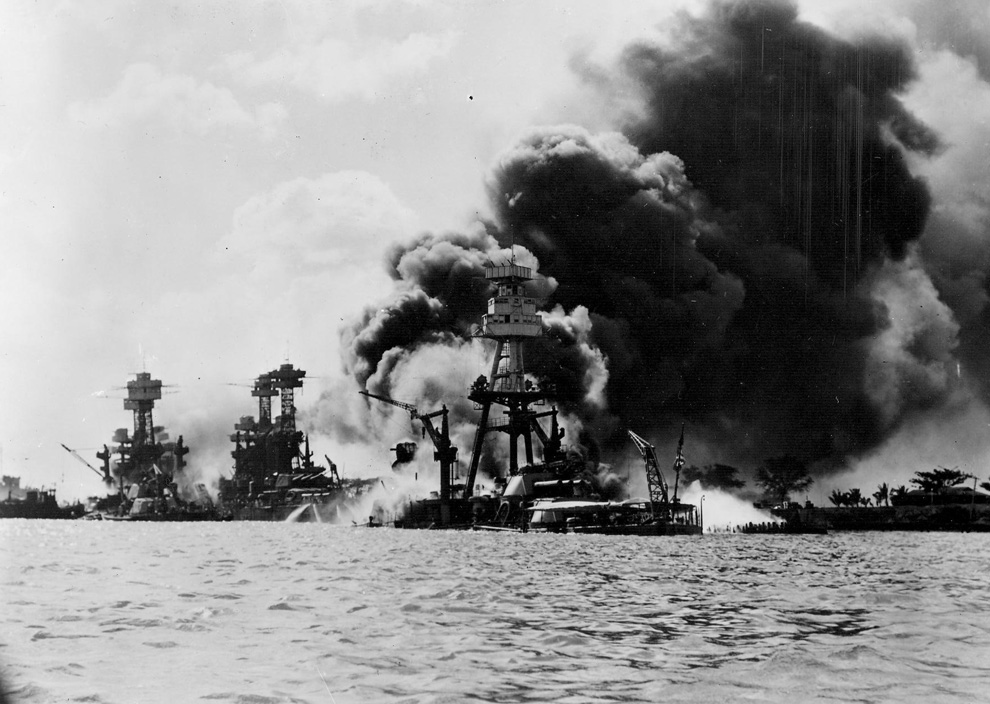By Darrell Dow
Little is more needed than a revisionist view of the great civil war that took place within Western Civilization between 1914 and 1945. December 7 is always a good place to begin because it was the “sneak attack” on Pearl Harbor that dragged the United States into World War II.
If you have not read Robert Stinnet’s Day of Deceit about the Japanese attack on Pearl Harbor, it is well worth the time. Charles Callan Tansill, one of the foremost American diplomatic historians of the 20th century, John Toland, and many others have also convincingly argued that President Franklin Roosevelt wished to involve the United States in the European War that began in September 1939. Americans opposed it. The America First Committee was a powerful countervailing force to FDR.

Thus frustrated, he decided to provoke Japan into attacking the United States. Doing so would involve Japan’s Axis allies, and so America would thus enter the war through the back door. Stinnett wrote 56 years after the war and with the benefit of much more available information. A few vignettes from the book:
1) In the summer of 1940, Roosevelt ordered the Pacific fleet to relocate from the West Coast to Hawaii. Its commander, Admiral Richardson, protested that Pearl Harbor offered inadequate protection from air and torpedo attack. Richardson was unwilling to have his fleet serve as bait, proverbial sitting ducks. He was subsequently replaced.
2) On October 7, 1940, Naval Intelligence analyst Arthur McCollum wrote an eight-point memo for Roosevelt on how to goad Japan into war, including an American oil embargo against Japan. All of them were eventually accomplished.
3) On June 23, 1941, one day after Hitler’s attack on Russia, Secretary of the Interior and FDR’s advisor Harold Ickes wrote a memo to the president. “There might develop from the embargoing of oil to Japan such a situation as would make it not only possible but easy to get into this war in an effective way. And if we should thus indirectly be brought in, we would avoid the criticism that we had gone in as an ally of communistic Russia.”
4) Going to war “as an ally of communistic Russia” is exactly what the Red agents around FDR wanted, of course, but that aside, on October 18, Ickes wrote in his diary; “For a long time I have believed that our best entrance into the war would be by way of Japan.”
5) The U.S. had cracked key Japanese military and diplomatic codes long before the attack. FDR received “raw” translations of all key messages. On September 24, 1941, Washington deciphered a message from the Naval Intelligence HQ in Tokyo to Japan’s consul-general in Honolulu, requesting a grid of exact locations of U.S. Navy ships in the harbor. Gen. Walter Short and Adm. Husband Kimmel, the commanders of U.S. forces in Hawaii, were not warned.
6) On November 15th, 1941, Gen. George Marshall held an off-the-record press briefing. Attending were writers from Time, The Associated Press, The New York Times, the New York Herald Tribune, and United Press International. Marshall said they were expecting war to begin the first week of December. That information was not shared with Short and Kimmel.
7) On November 25, Secretary of War Henry L. Stimson wrote in his diary that FDR said an attack was likely within days, and asked, “how we should maneuver them into the position of firing the first shot without too much danger to ourselves. In spite of the risk involved, however, in letting the Japanese fire the first shot, we realized that in order to have the full support of the American people it was desirable to make sure that the Japanese be the ones to do this so that there should remain no doubt in anyone’s mind as to who were the aggressors.”


[…] SOME TRUTH ABOUT DEC. 7, it is a brief but enlightening read. […]